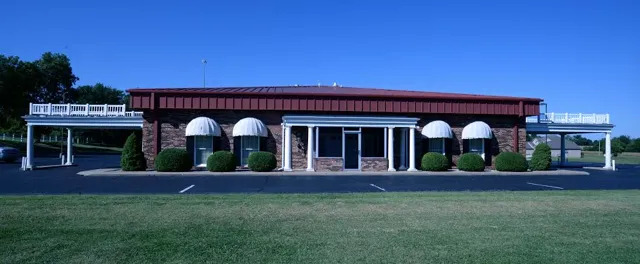10 Facts You Need to Know About Hospice
Article originally appeared on AARP
An interesting thing happens when Dawn Gross brings up hospice to patients or their families:
“Oh, no, we don’t want that!” they often say.
“OK,” says Gross, a hospice andpalliative care physician in San Francisco. “Tell me exactly what you don’t want, so we’re sure not to give you that.”
Going off to some facility, they tell her. Losing control of care. Being knocked out by morphine. Or — the clincher — giving up. When Gross assures them that hospice isn’t at all like that — that two-thirds of hospice care takes place in the person’s home or a long-term care facility, that the patient can still receive medical care, and that Medicare and most private health insurers pay for it in full — they often change their minds.
In 2011, about a million people died in hospice — about 42 percent of all those who died, according to the National Hospice and Palliative Care Organization in Alexandria, Va. — and its use is growing.
Still, misconceptions about this end-of-life service abound. As a result, many who might benefit from hospice don’t sign up until the very end: About a third of hospice users enroll for less than a week, and the median time is 18 days.
So how can you tell whether hospice is the right choice for you or your loved one? The answer depends on what you believe hospice is, your current goals, and what you think it can — or can’t — do for you.
Here’s what you need to know.
Hospice is a philosophy of care, not a brick-and-mortar location. Most people say they want to die at home, but only about 1 in 4 end up doing so. One big reason: It’s often just too hard. “Trying to care for someone with a serious illness, especially at home, without hospice is like trying to have surgery without anesthesia,” says Ira Byock, the executive director of the Providence Institute for Human Caring.
Hospices bring everything you might need to the home — hospital bed, bedside commode, medications, bandages, expert consults — tailored to your needs.
But if you’re daunted by home care, or simply don’t want a loved one to die in your home, hospice care also is available in facilities and hospitals.
Signing up doesn’t mean giving up all medical care. Transitioning to hospice means shifting from one set of goals (how to get longer life through a cure) to another (how to get the best quality of life out of whatever time is left).
“When people say, ‘I don’t want to give up,’ the key is to understand what they think they’re giving up,” Gross says. Even when a cure is no longer viable, therapies that improve symptoms and raise comfort can continue. “I deliver very aggressive care in hospice,” she adds.
If, however, you feel that you have not exhausted all of your treatment options in search of a cure, hospice may not be for you. Medicare hospice rules require forgoing curative treatments.
That may soon change, though. In July, Medicare announced the expansion of a five-year pilot program to 141 hospices in 40 states to allow patients to continue pursuing curative treatments while under hospice care.
You have to qualify for hospice, but you can opt out at any time. To qualify for hospice benefits, either through Medicare or private insurance, two physicians must certify that you have a life-altering condition with an expected prognosis of six months or less. This time frame is arbitrary, however; there’s no biological or scientific basis for knowing how long you have left, Gross says.
If you start hospice and realize it’s not for you, you can quit. How can you know when to try hospice? This should be part of ongoing discussions with your health care team, Byock says — “ongoing” because goals and needs evolve.
You may live longer during the time you have left. Hospice recipients live longer, on average, than those receiving standard care, research shows. A 2010 study of lung cancer patients found they lived nearly three months longer; another study, looking at the most common terminal diagnoses, found the same, ranging from an average of 20 more days (gallbladder cancer) to 69 days (breast cancer).
You can still see your regular doctor. Multidisciplinary by intention, a basic hospice team consists of a physician and nurse (both on call 24 hours a day); a social worker, counselor or chaplain; and a volunteer. Many hospices offer added services: psychologists, psychiatrists, home health aides, art or pet therapists, nutritionists, and occupational, speech, massage or physical therapists. You may also continue to see your regular doctor. And you remain in charge of your medical decisions.
The goal of pain management in hospice is to enable you to live well — not sedate you. “People often mistakenly think pain medicine will make the person sleepy to the point where they can’t interact,” says Karen Whitley Bell, a hospice nurse for 20 years and author of Living at the End of Life. “To the contrary, if you live with pain unnecessarily, it makes you more tired and irritable, and robs you of quality of life.” When drugs like morphine are used, it’s to treat anxiety and to lessen pain, which has been shown to be undertreated at the end of life — not hasten death, as many people mistakenly believe.
Hospice can enrich, and sometimes salvage, the last stage of life. Almost a third of those with a terminal illness die in the hospital, hooked up to machines that do little to halt the process of dying. Hospice is designed to support the more personal aspects of this life stage: reflecting on one’s legacy and life meaning, focusing on relationships in a deeper and more intentional way, achieving a sense of closure, and realizing any end-of-life goals, such as attending a grandchild’s graduation or getting financial affairs in order.
Hospice is for the entire family. It’s not always easy to witness the hallucinations of delirium or understand the body language of someone who can no longer speak, for example. A hospice nurse can help interpret what’s happening, or explain the signs of imminent death. And when families need a break, the sick person can spend up to five days at a time in inpatient respite care, such as in a nursing home or hospice facility.
Hospice continues after death. Many people don’t realize that optional follow-up grief support for 12 months is included under Medicare rules. “For many of our families, their journey with hospice is only beginning once their loved one dies,” says bereavement counselor Anne Alesch. She runs separate support groups for surviving spouses and adult children.
Ultimately, hospice makes space for “the spirit, the love and the quieting of the mind” that tend to take precedence as the body prepares to shut down, says Nina Angela McKissock, author of From Sun to Sun: A Hospice Nurse Reflects on the Art of Dying. Adds Ira Byock: “We make a mistake in assuming that serious illness and dying are mostly medical. They’re fundamentally personal.”
Paula Spencer Scott is the author of Surviving Alzheimer’s: Practical Tips and Soul-Saving Wisdom for Caregivers.
More on Hospices
As hospice has evolved from a grassroots movement to a booming industry, a few bad apples have inevitably emerged. What should you look for when evaluating a hospice? “There’s no easy shortcut to evaluating quality care,” says Joe Rotella, M.D., chief medical director of the American Academy of Hospice and Palliative Medicine. But here are some questions to ask.
Is the hospice accredited? “Hospices aren’t required to be certified or accredited, but those that seek outside accreditation are making a special commitment to quality care,” Rotella says. The Joint Commission, Community Health Accreditation Partner, the National Hospice and Palliative Care Organization and other groups have created standards of excellence that participating hospices must meet. Some state agencies also certify hospices.
Has the hospice been surveyed by a state or federal oversight organization? If so, when? What were the results? The Affordable Care Act now requires hospices that accept Medicare — almost all of them — to complete surveys and provide data about several quality measures, including how well they manage patients’ pain. Eventually the results will be publicly available online. For now, ask if a survey has been done and what the results show.
Is the medical director board-certified? Board certification is not a requisite, “but having a medical director who is certified by a medical board as a palliative medicine specialist offers one more assurance of training, experience and overall quality,” Rotella says.
How many patients does the hospice program care for? Hospices come in many sizes. Although smaller ones may provide more personalized care, larger ones (those serving at least 100 patients) have more resources.
What is the typical caseload? Ideally, a hospice nurse or nurse practitioner should manage a caseload with no more than 12 patients. — Peter Jaret




